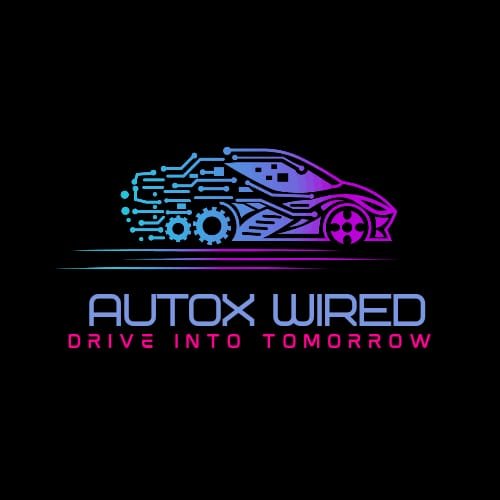
Traffic congestion continues to plague urban centers worldwide. Cities struggle with overcrowded roadways, inefficient traffic signals, and increasing vehicle numbers. Smart traffic systems offer a transformative solution by optimizing traffic flow, reducing delays, and improving road safety. These systems integrate artificial intelligence (AI), real-time data, and connected infrastructure to create a seamless and efficient transportation network.
Understanding Smart Traffic Systems
Smart traffic systems use advanced technology to monitor and manage roadways effectively. These systems rely on data from sensors, cameras, and GPS-enabled vehicles to analyze traffic patterns in real-time. Authorities then use this data to adjust signals, reroute vehicles, and minimize congestion.
Key Components of Smart Traffic Systems
- AI-Powered Traffic Lights – Adaptive signals adjust timing based on live traffic conditions.
- Connected Vehicles – Communication between cars and infrastructure improves safety and efficiency.
- Smart Highways – Embedded sensors collect data to optimize road usage.
- Data Analytics and Predictive Modeling – Algorithms forecast congestion and suggest alternative routes.
- Public Transport Integration – Synchronization with buses and trains enhances urban mobility.
By integrating these elements, cities can create intelligent transportation networks that reduce bottlenecks and improve travel efficiency.
AI-Powered Traffic Lights: Smarter Signal Management
Traditional traffic lights operate on fixed timers, leading to unnecessary delays. AI-powered systems use cameras and sensors to detect vehicle density and pedestrian movement. These systems adjust light durations dynamically, allowing smoother traffic flow.
Benefits of AI-Powered Traffic Signals
- Reduced Idle Time: Cars spend less time waiting at red lights.
- Lower Fuel Consumption: Efficient traffic movement decreases fuel waste.
- Improved Emergency Response: Signals prioritize ambulances and fire trucks.
- Better Pedestrian Safety: Smart crossings enhance visibility and timing for walkers.
Cities like Los Angeles and London have adopted AI-driven signal control, witnessing a measurable drop in congestion and travel time.
Connected Vehicles: Enhancing Traffic Coordination
Smart traffic systems rely on vehicle-to-infrastructure (V2I) and vehicle-to-vehicle (V2V) communication. Cars equipped with sensors share real-time information about road conditions, speed, and congestion levels.
Advantages of Connected Vehicles
- Collision Avoidance: Cars receive alerts about sudden braking or hazards.
- Dynamic Routing: Navigation systems adjust routes based on congestion.
- Smoother Traffic Flow: Automated speed adjustments prevent unnecessary braking.
- Integration with Autonomous Vehicles: Self-driving cars operate more efficiently in a connected environment.
Cities investing in V2X (Vehicle-to-Everything) communication will experience fewer traffic jams and safer roads.
Smart Highways: Data-Driven Infrastructure
Smart highways incorporate advanced technologies to regulate traffic. These roads use embedded sensors, LED lane markers, and automated tolling systems to streamline movement.
Key Features of Smart Highways
- Dynamic Lane Usage: Lanes open or close based on traffic volume.
- Real-Time Road Condition Monitoring: Authorities receive instant updates on accidents or obstacles.
- Electric Vehicle (EV) Charging Lanes: Wireless charging capabilities reduce stops.
- Automated Toll Collection: Contactless tolling minimizes bottlenecks.
Countries like the Netherlands and South Korea have successfully implemented smart highways, reducing congestion and enhancing sustainability.
Data Analytics and Predictive Modeling: Forecasting Traffic Patterns
Predictive analytics harnesses historical data, weather conditions, and real-time traffic reports to anticipate congestion before it happens. AI-driven models identify patterns and suggest proactive solutions.
How Predictive Analytics Reduces Congestion
- Accurate Traffic Forecasting: Authorities can anticipate peak hours and adjust road management accordingly.
- Proactive Rerouting: Drivers receive alternative routes before encountering traffic jams.
- Improved Infrastructure Planning: City planners use data insights to design better roads.
- Incident Detection: AI detects unusual traffic patterns, alerting officials about accidents or roadblocks.
By leveraging predictive analytics, urban centers can enhance traffic efficiency and reduce unexpected slowdowns.
Public Transport Integration: Seamless Urban Mobility
Smart traffic systems do not solely focus on private vehicles. Effective integration with public transport ensures that buses, trains, and rideshares operate smoothly.
Ways Smart Systems Improve Public Transport Efficiency
- Smart Bus Stops – Real-time arrival data minimizes wait times for commuters.
- Priority Signaling for Buses – Traffic lights adjust to allow faster bus movement.
- Dynamic Pricing for Rideshares – AI-driven pricing encourages carpooling during peak hours.
- Multimodal Journey Planning – Apps provide real-time transit schedules, helping travelers switch between different modes of transportation efficiently.
Cities like Singapore and Tokyo have integrated smart public transport, significantly reducing dependency on private vehicles.
Environmental and Economic Benefits of Smart Traffic Systems
Reduced Carbon Emissions
- Less idling and smoother traffic flow decrease fuel consumption.
- EV-friendly infrastructure promotes sustainable transportation.
- AI-powered route optimization prevents unnecessary detours.
Lower Transportation Costs
- Businesses save money on fuel and delivery time.
- Governments reduce infrastructure maintenance costs by minimizing congestion-related wear and tear.
- Commuters experience fewer delays, improving overall productivity.
Enhanced Road Safety
- Smart signals prevent red-light violations.
- Real-time hazard detection warns drivers about road conditions.
- Emergency services navigate traffic efficiently with AI-controlled signal systems.
Challenges and Future Innovations
Infrastructure Investment
- Cities must invest in sensors, AI technology, and connected networks.
- Governments need to collaborate with private technology firms to implement large-scale solutions.
Privacy and Data Security
- AI-driven traffic monitoring raises concerns about data collection and security.
- Robust cybersecurity measures ensure that smart traffic systems remain protected from cyber threats.
Future Innovations
- 5G Connectivity: Faster data transmission will improve vehicle-to-infrastructure communication.
- Autonomous Traffic Control Centers: AI-driven hubs will manage entire city traffic systems without human intervention.
- Hyperloop and High-Speed Transit Integration: Advanced public transit solutions will complement smart road networks.
Conclusion
Smart traffic systems present a viable solution to urban congestion by leveraging AI, connected vehicles, and data analytics. These systems optimize traffic flow, enhance public transport efficiency, and promote sustainability. Cities adopting intelligent traffic management strategies will experience improved road safety, reduced travel times, and a decrease in environmental impact.
Governments, urban planners, and technology firms must collaborate to implement and refine smart traffic systems. The future of transportation depends on innovation, and cities that embrace these advancements will set the standard for efficient, congestion-free mobility.







